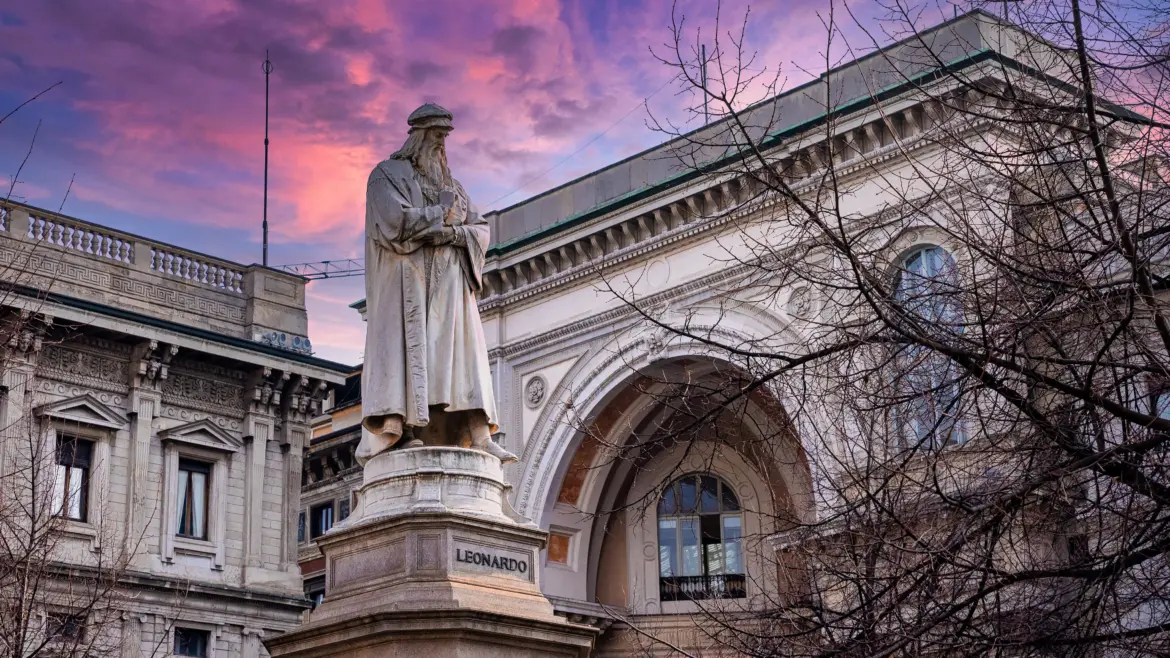Ciao art enthusiasts! 🎨 When you think of Leonardo da Vinci, it’s easy to picture him sketching in Florence or dreaming in Rome. But it was Milan that became his home for nearly two decades, and it was here that some of his most ambitious ideas, artworks, and inventions were born. Under the patronage of Ludovico Sforza, Duke of Milan, Leonardo thrived not only as a painter, but also as an engineer, scientist, architect, and stage designer. He left his fingerprints across the city – in canals, castles, chapels, and codices – that still inspire awe today.
Exploring Milan through Leonardo’s story is more than sightseeing. It’s a chance to connect with one of history’s greatest minds in the very places where he dreamed, experimented, and created.
Leonardo Arrives in Milan (1482)
In 1482, Leonardo left Florence for Milan at the age of 30. In a famous letter to Duke Ludovico Sforza (known as “il Moro”), he offered his services not primarily as a painter, but as a military engineer. He promised to build bridges, fortify cities, and design innovative war machines. Only at the very end did he modestly mention that he could also paint.
This bold self-pitch worked. Ludovico invited him to court, and Leonardo entered a world of influence, culture, and opportunity. Milan at that time was a flourishing Renaissance capital, a city of power and trade where art and politics intersected. Here, Leonardo found a space that allowed him to grow beyond being just an artist. He became the quintessential Renaissance man, working on everything from painting masterpieces to designing festivals, costumes, and hydraulic systems. Milan gave him the platform to dream big.
Artistic Legacy
The Last Supper (Cenacolo Vinciano):Painted between 1495 and 1498 in the refectory of Santa Maria delle Grazie, The Last Supper is Leonardo’s most famous Milanese masterpiece. Unlike earlier depictions, Leonardo captured the emotional shock of the moment when Christ tells his disciples that one of them will betray him.
- Innovation: He used experimental techniques (painting on dry plaster instead of wet fresco) which gave him freedom but also caused the work to deteriorate quickly.
- Survival: The painting has endured centuries of decay, neglect, and even bombing during World War II (when much of Santa Maria delle Grazie was destroyed, but the wall with The Last Supper miraculously survived).
- Impact: Standing before it today, you feel its fragility and power, the faces alive with fear, doubt, and devotion, the perspective drawing you into the drama.
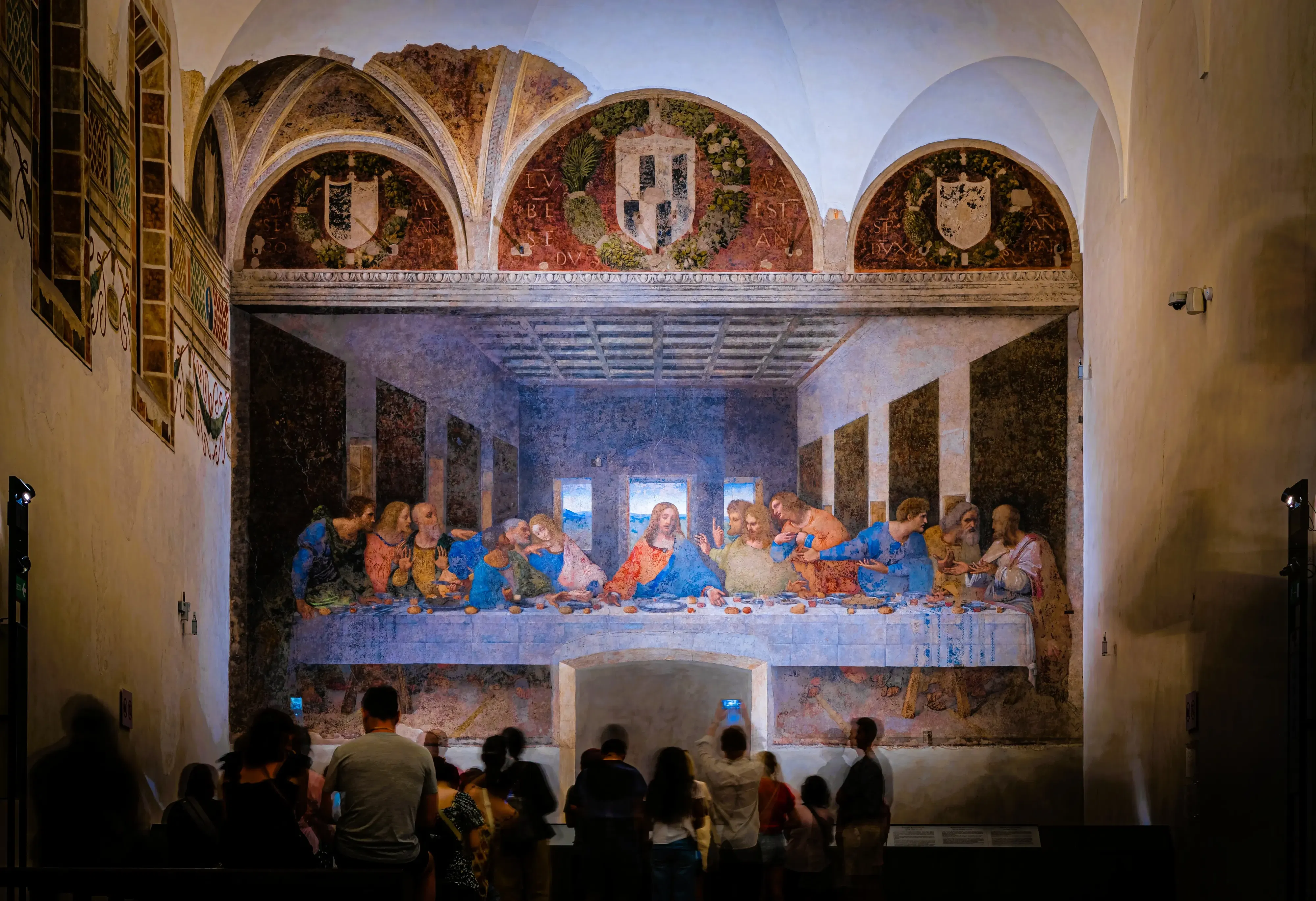
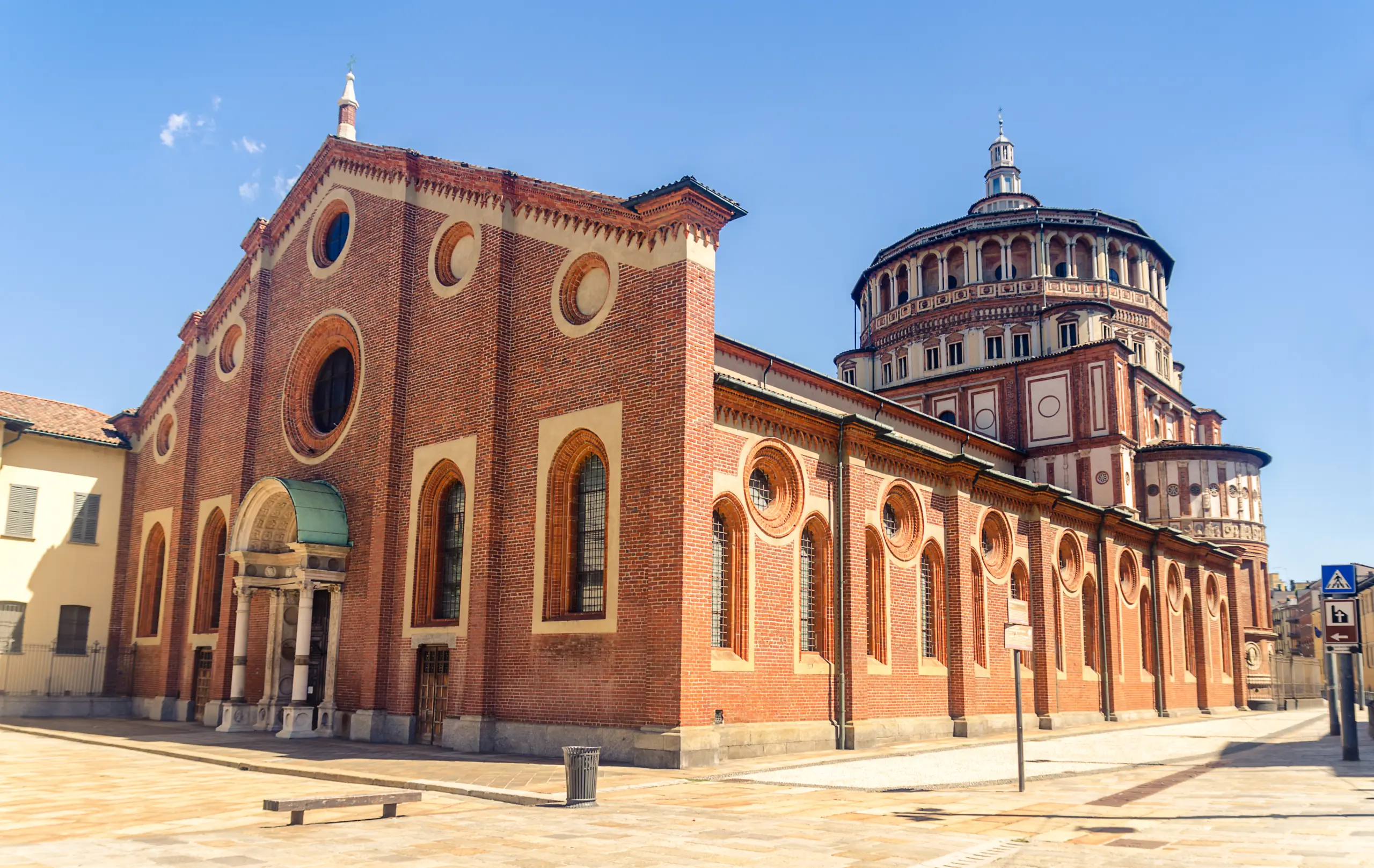
Though many of Leonardo’s Milanese commissions remain unfinished or lost, his presence reshaped Milanese art. His notebooks, sketches, and preparatory studies influenced younger artists, and his experiments in perspective and anatomy set new standards for Renaissance painting.
Engineering & Science in Milan
Leonardo’s Milanese years weren’t limited to canvases. He was equally obsessed with solving practical problems, blending creativity with technical skill.
- The Navigli Canals: Milan’s system of canals (navigli) had already existed, but Leonardo refined and improved them. He designed innovative miter lock gates to regulate water flow and elevation, making transport and trade easier. These systems helped transport the massive marble blocks used to build the Duomo. Today, strolling along Naviglio Grande, you can still trace the influence of Leonardo’s hydraulic genius.

- Fortifications for the Sforza Court: Leonardo drew detailed plans for modernizing Sforza Castle’s fortifications. His sketches included star-shaped fortresses and defensive innovations far ahead of their time. Though many were never built, they showed his ability to think about security and architecture in entirely new ways.
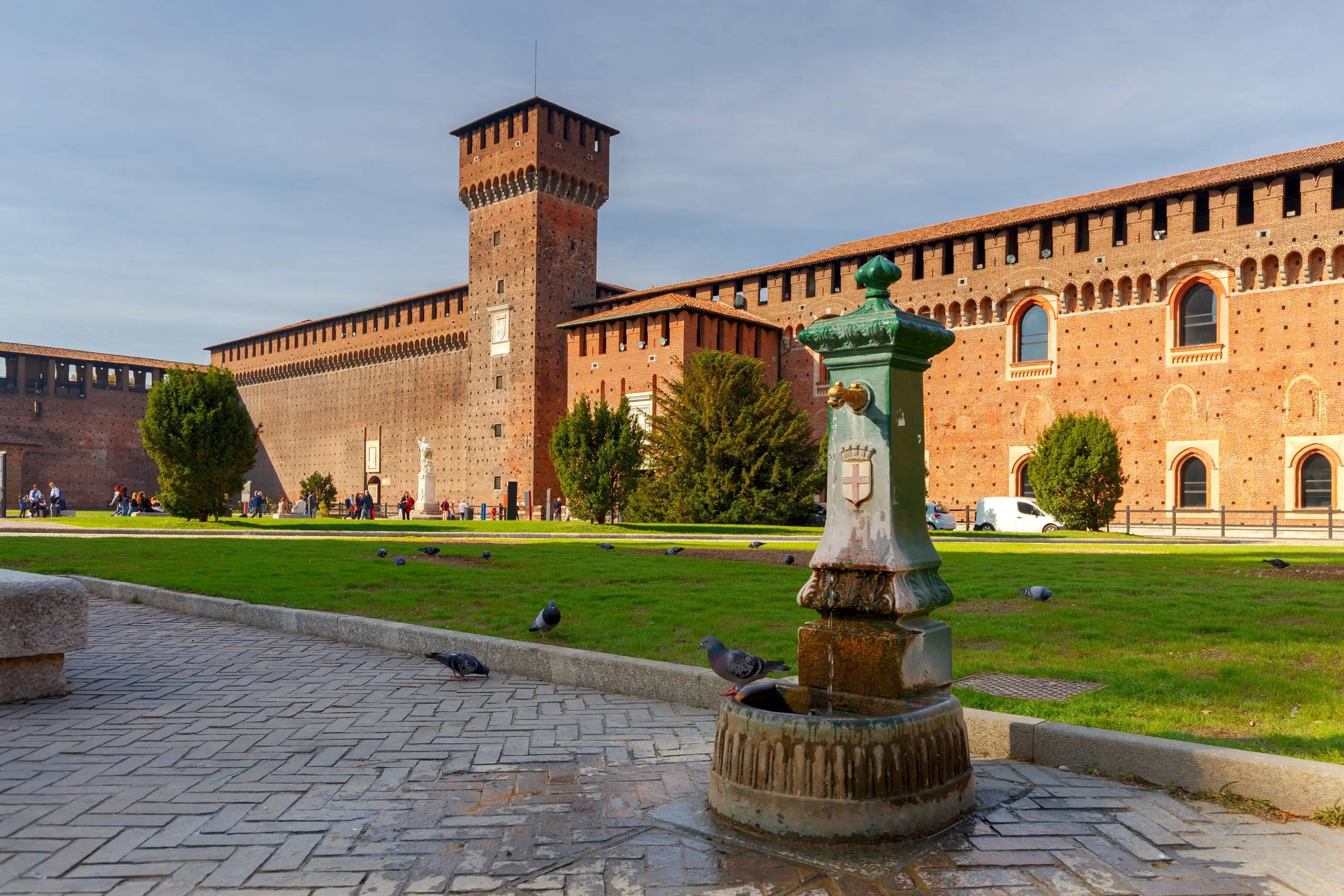
- Machines of the Future: From sketches of flying machines to armored tanks and self-propelled carts, Leonardo’s Milanese notebooks reveal a restless imagination. He wasn’t content with painting, he wanted to understand how the world worked, and how to push its limits. These inventions and designs, preserved in the Codex Atlanticus, still inspire awe today.
Leonardo’s Museums & Modern Legacy
Milan keeps Leonardo alive through its museums, where his works and ideas are celebrated:
- Museo Nazionale della Scienza e della Tecnologia Leonardo da Vinci: one of Italy’s largest science museums, named after Leonardo, displays life-sized models built from his sketches: bridges, machines, even submarines. It’s an incredible place to see his ideas in three dimensions.
- Biblioteca Ambrosiana: This historic library houses the Codex Atlanticus, the most extensive collection of Leonardo’s notebooks (over 1,000 pages). Flipping through them reveals his sketches of inventions, maps, anatomy studies, and even doodles, an intimate window into his mind.
- Leonardo3 Museum: An interactive museum, near Teatro alla Scala, that brings his machines to life with digital reconstructions and models. Perfect for families, it makes Leonardo’s genius accessible and fun.
These spaces make Leonardo’s genius tangible; you can not only admire his art but also step into his imagination.
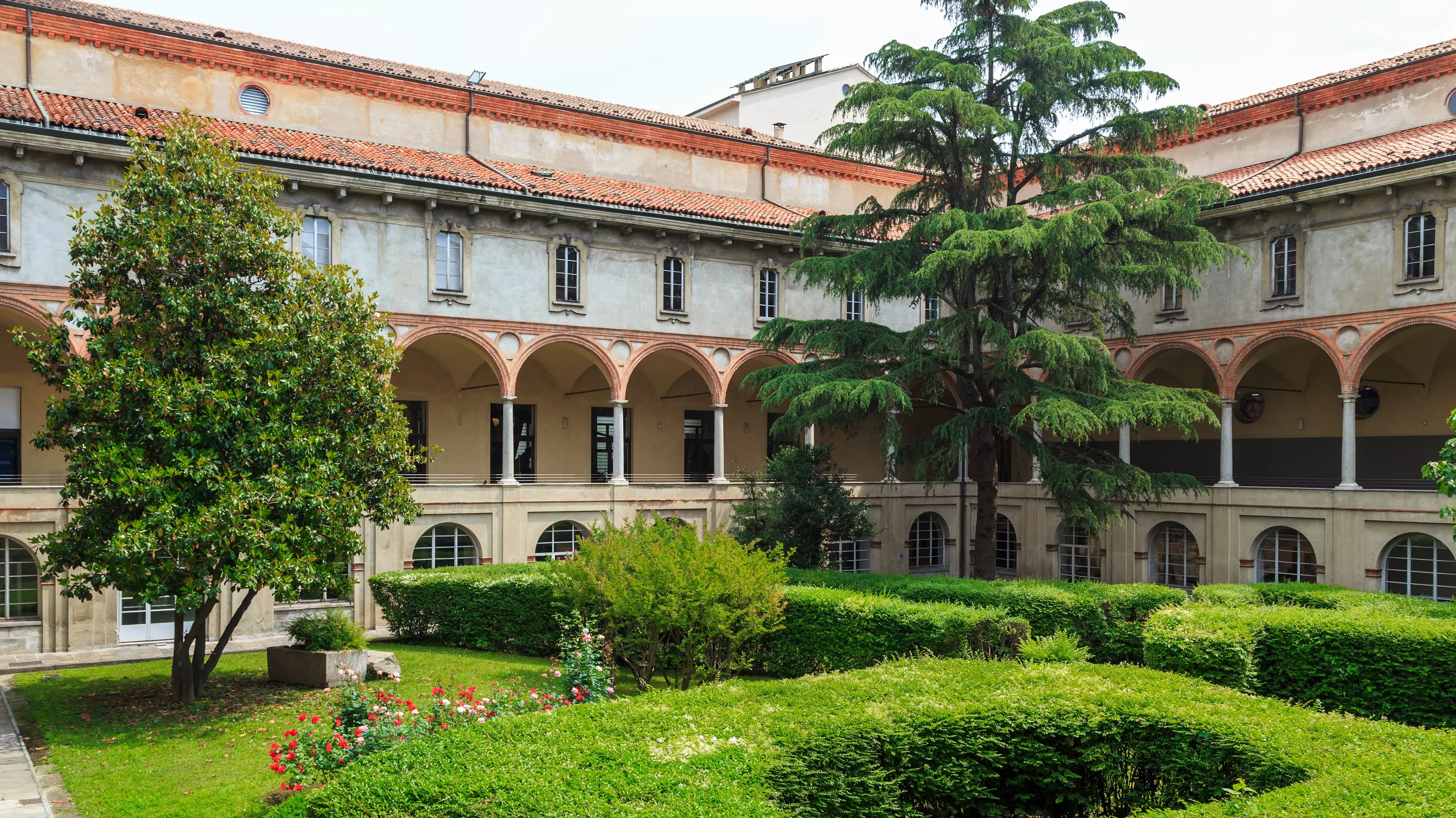
My Personal Reflection
Experiencing Milan through Leonardo’s legacy was one of the highlights of my trip. At The Last Supper, I stood in silence, moved by how fragile yet powerful it remains after centuries of survival. At the Navigli, I imagined workers hauling marble for the Duomo thanks to Leonardo’s hydraulic systems. Leonardo’s Milan reminded me that travel isn’t just about admiring beauty, it’s about connecting with minds and stories that still shape our world. What struck me most was Leonardo’s insatiable curiosity: he refused to be just one thing. Painter, engineer, dreamer, he was all of these at once. And in Milan, that spirit still lingers.
Tips for Visiting Leonardo’s Milan
- Book Early: Tickets for The Last Supper often sell out months in advance. Reserve as soon as you can.
- Plan a Route: Combine Duomo, Ambrosiana, Sforza Castle, Santa Maria delle Grazie, Navigli for a full “Leonardo day”!
- Museums: If you’re with family, prioritize the Leonardo3 Museum for its hands-on appeal. For deeper dives, don’t miss the Museo Nazionale della Scienza e della Tecnologia Leonardo da Vinci.
- Timing: Go early in the morning for museums and late afternoon for Navigli sunsets, you’ll see Milan in its most magical light.
- Guided Tours: Consider a dedicated “Leonardo in Milan” tour to uncover hidden details you might miss on your own.
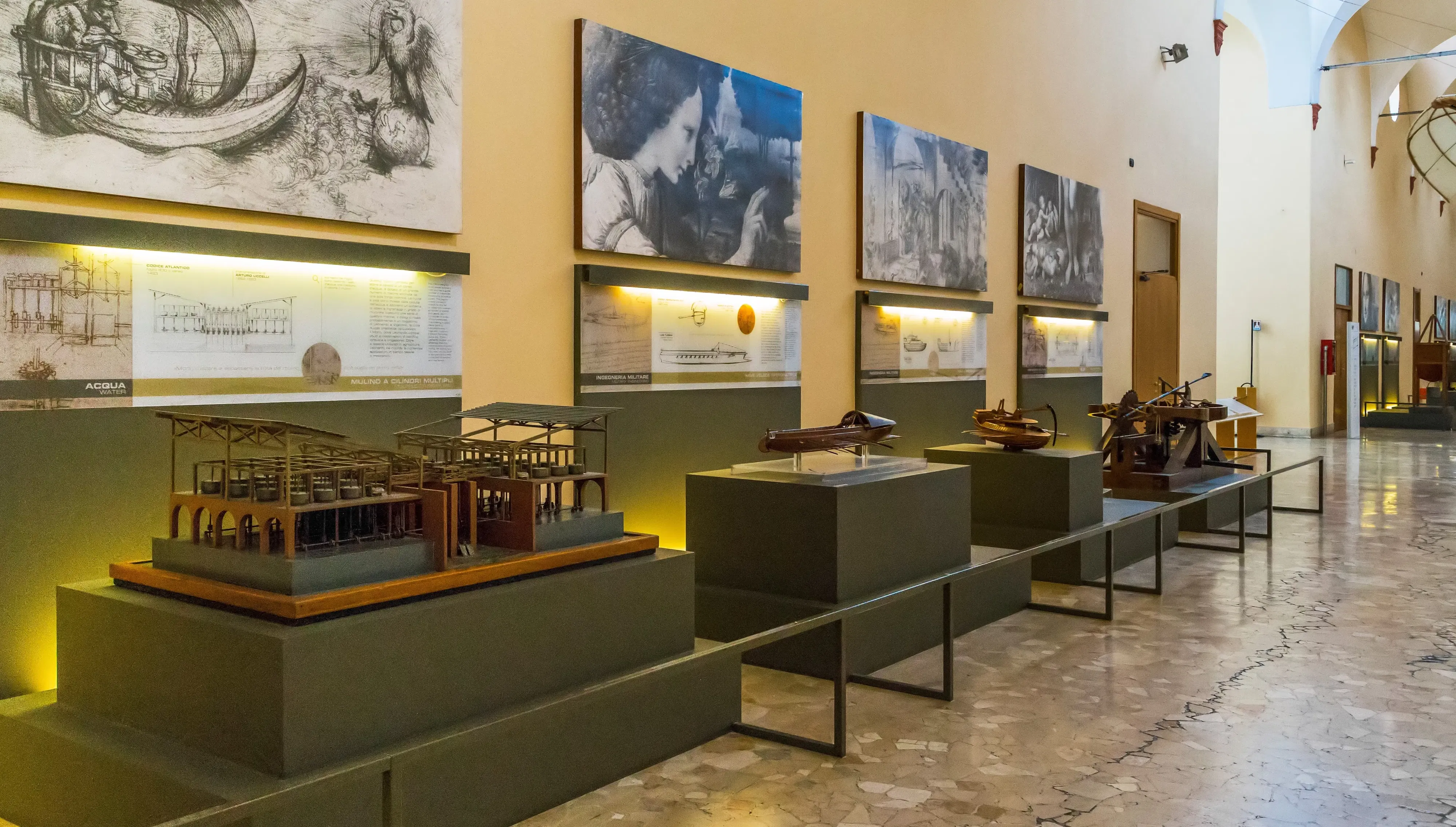
Final Thoughts
Leonardo da Vinci’s Milan is everywhere, etched into the walls of convents, in the design of canals, preserved in notebooks, and reimagined in museums. His genius wasn’t limited to one discipline, and neither is his legacy.
For me, tracing Leonardo’s footsteps in Milan was more than a history lesson. It was a reminder of what it means to stay curious, to look at the world from every angle, and to never stop asking questions. Milan wasn’t just a backdrop for his genius, it was his laboratory, his stage, and his inspiration.
If you’re planning a visit, make time for Leonardo. Walk where he walked, marvel at his art, study his inventions, and you’ll discover a Milan that is as much about imagination as it is about history.
xoxo,
Bubbly 🎨

